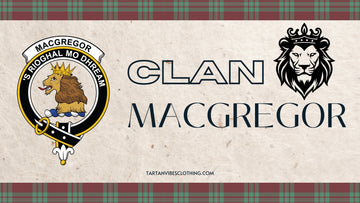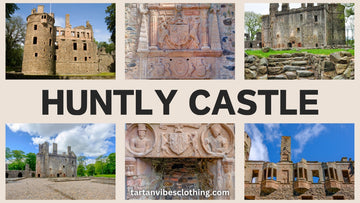Clan MacGregor: History, Crest & Coat of Arms, and Tartan
by Teejay Smith on Apr 26, 2024
Table of Content
I. Introduction
Nestled in the majestic landscapes of the Northern Highlands, Clan MacGregor is one of Scotland’s most renowned Highland clans and boasts a storied history filled with tales of courage, resilience, and cultural richness. Despite enduring adversity and persecution, particularly during the 17th and 18th centuries, the Clan MacGregor have steadfastly preserved their heritage and traditions.
This article delves into the fascinating journey of MacGregor Clan Scotland, highlighting its significant contributions to Scottish history and its enduring legacy in modern times.
A. A Brief Overview of Clan MacGregor
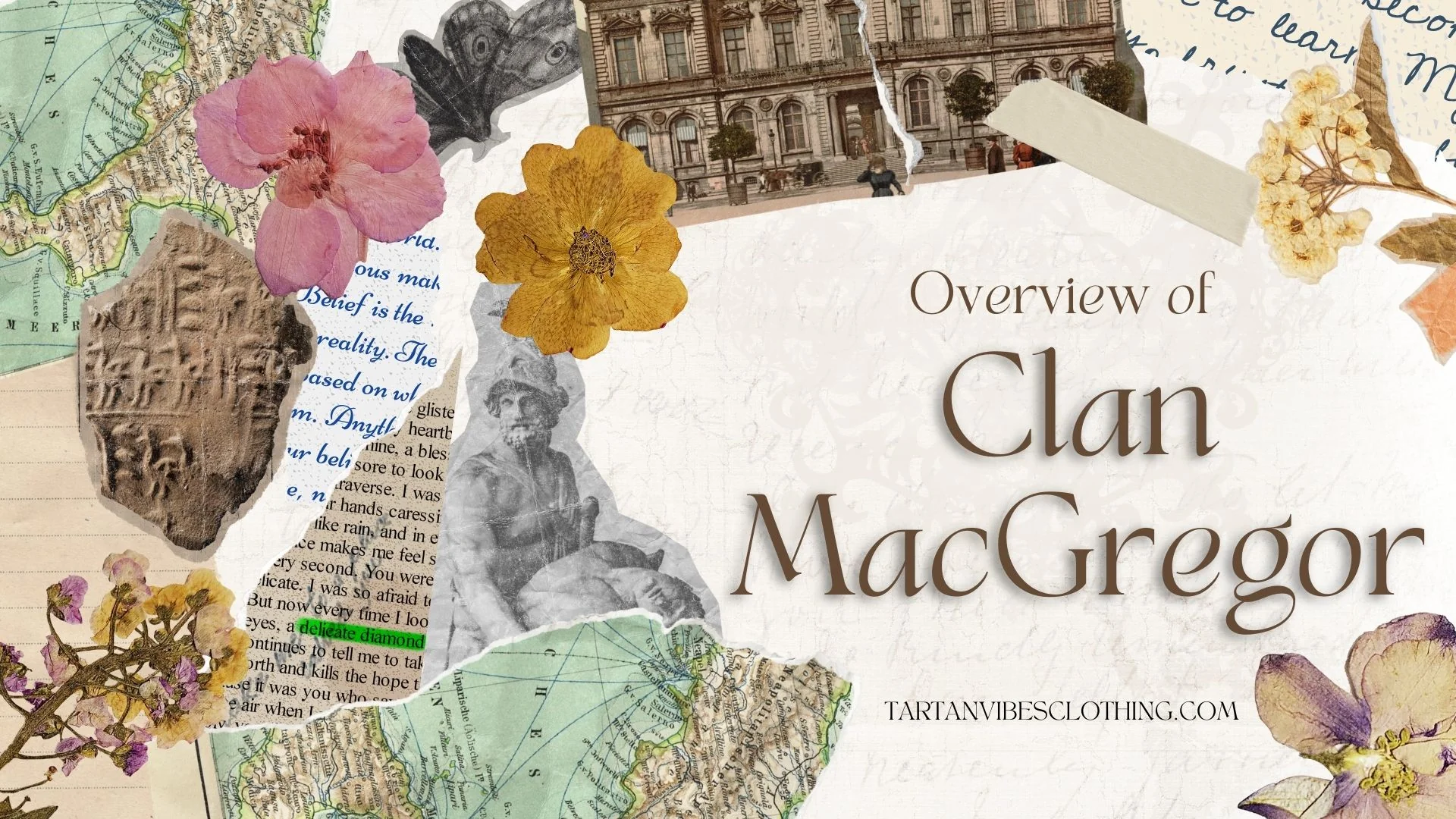
The Clan Gregor, also known as Clan MacGregor, traces its roots back to Scotland’s early 9th century, embodying a saga of bravery, clan rivalries, and perseverance against adversity. They maintained their resilience and identity through tumultuous times marked by power struggles and external pressures. Despite persecution, notably in the 17th and 18th centuries, the Clan MacGregor endured, holding steadfast to their heritage.
Additionally, they are recognized as one of Scotland’s earliest proponents of bagpipe music, a tradition dating back to the early 17th century. Today, they honor their heritage through cultural events, ensuring their traditions endure for generations.
B. The original of Clan MacGregor
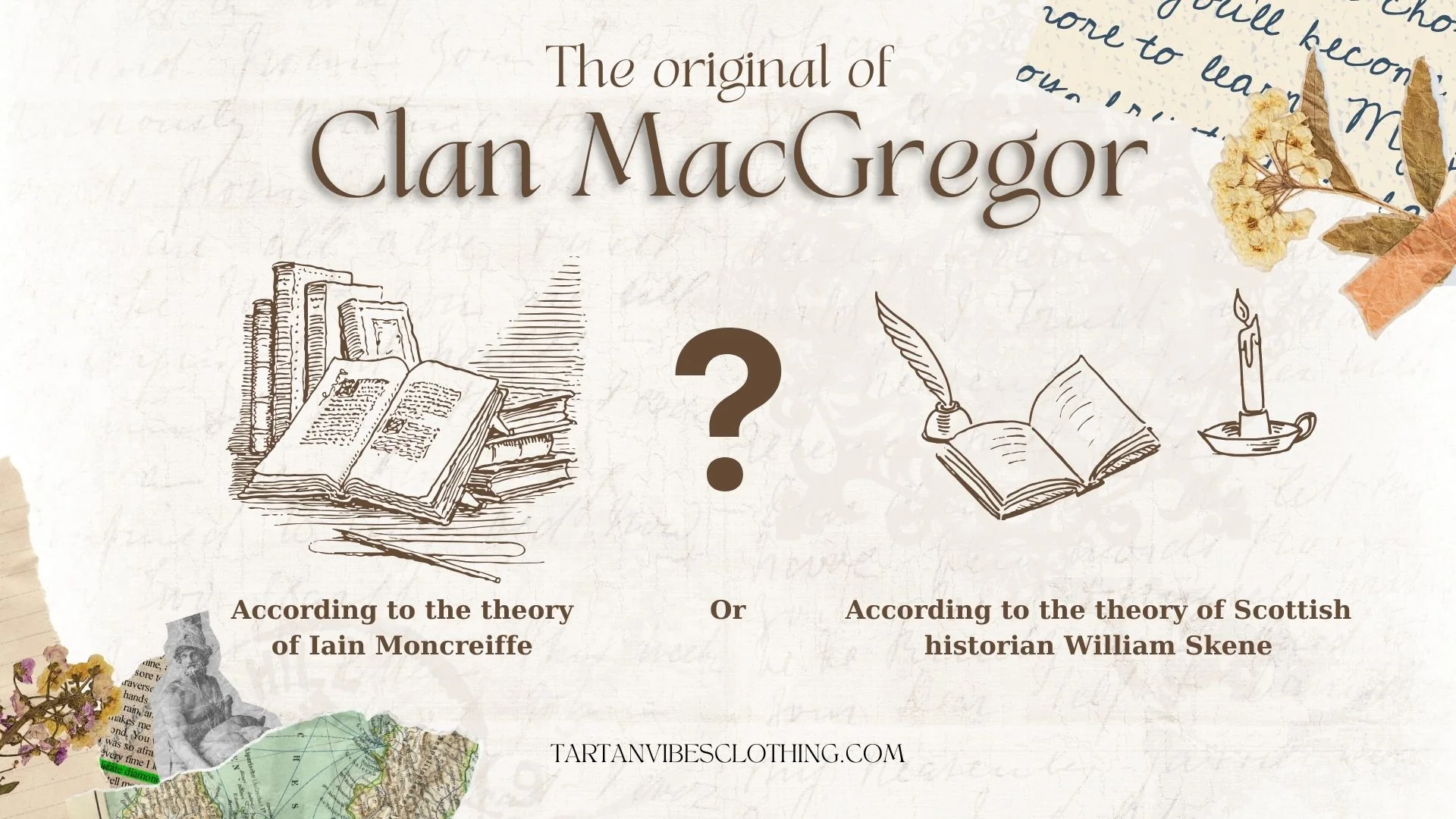
The Clan Gregor once held extensive lands in Glen Orchy, Glenlochy, and Glenstrae. According to Iain Moncreiffe, the Clan MacGregor is of descent from an ancient Celtic royal lineage, and their heritage is traced through the Abbots of Glendochart. This noble lineage is subtly referenced in the clan’s motto: “Royal is my race.” Another tradition suggests that Gregor may have been the brother of Kenneth MacAlpin, although evidence supporting this is scarce; Scottish historian William Skene lends some credence to this tradition. It is speculated that the progenitor of the Clan Gregor may have been Griogair, son of Dungal, who was believed to be a co-ruler of Alba.

Contemporary historians generally concur that the inaugural chief of Clan MacGregor was Gregor of the Golden Reins. His son, Iain Camm One Eye, succeeded him as the second chief, likely before 1390. The barony of Loch Awe, encompassing a significant portion of Clan MacGregor lands, was granted to the chief of Clan Campbell by Robert the Bruce. The Campbells had constructed Kilchurn Castle, strategically positioned to control access to the western Highlands. They engaged in conflicts with the MacGregors, driving them further into their territories until they were confined primarily to Glenstrae.
II. Clan MacGregor History
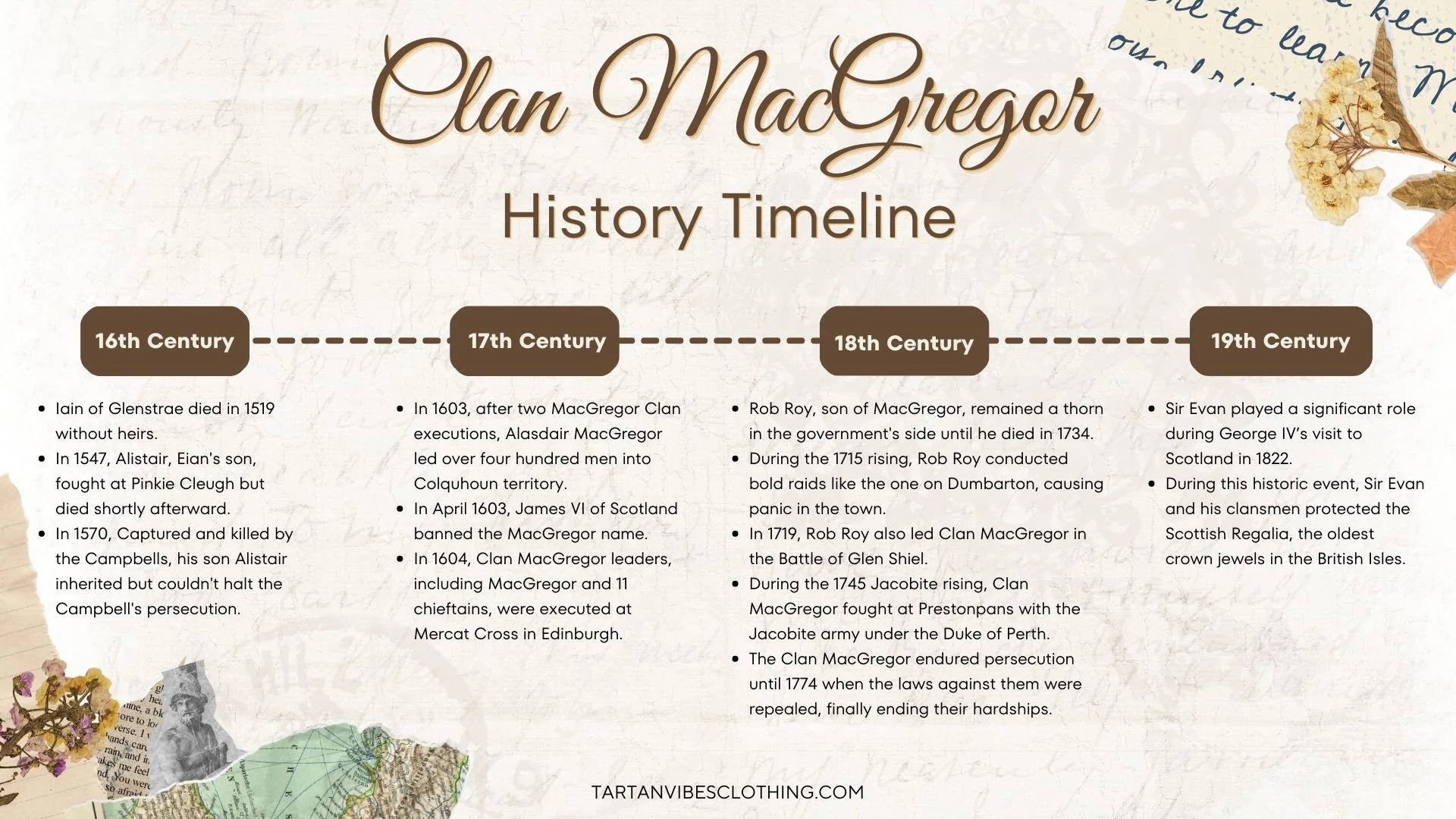
A. In the 16th century
Iain of Glenstrae, known as “the Black,” died in 1519 without direct heirs. Eian's succession was backed by the Campbells, and he married a daughter of Sir Colin Campbell of Glenorchy. Alistair, Eian’s son, fought in the Battle of Pinkie Cleugh in 1547 but died shortly after that. Colin Campbell’s refusal to recognize Gregor Roy MacGregor’s claim led to a decade-long conflict, with Gregor becoming an outlaw known for raids and hiding in remote glens. Captured and killed by the Campbells in 1570, his son Alistair inherited but couldn’t stop Campbell’s persecution, leading to the MacGregors’ moniker “Children of the Mist” due to their losses.
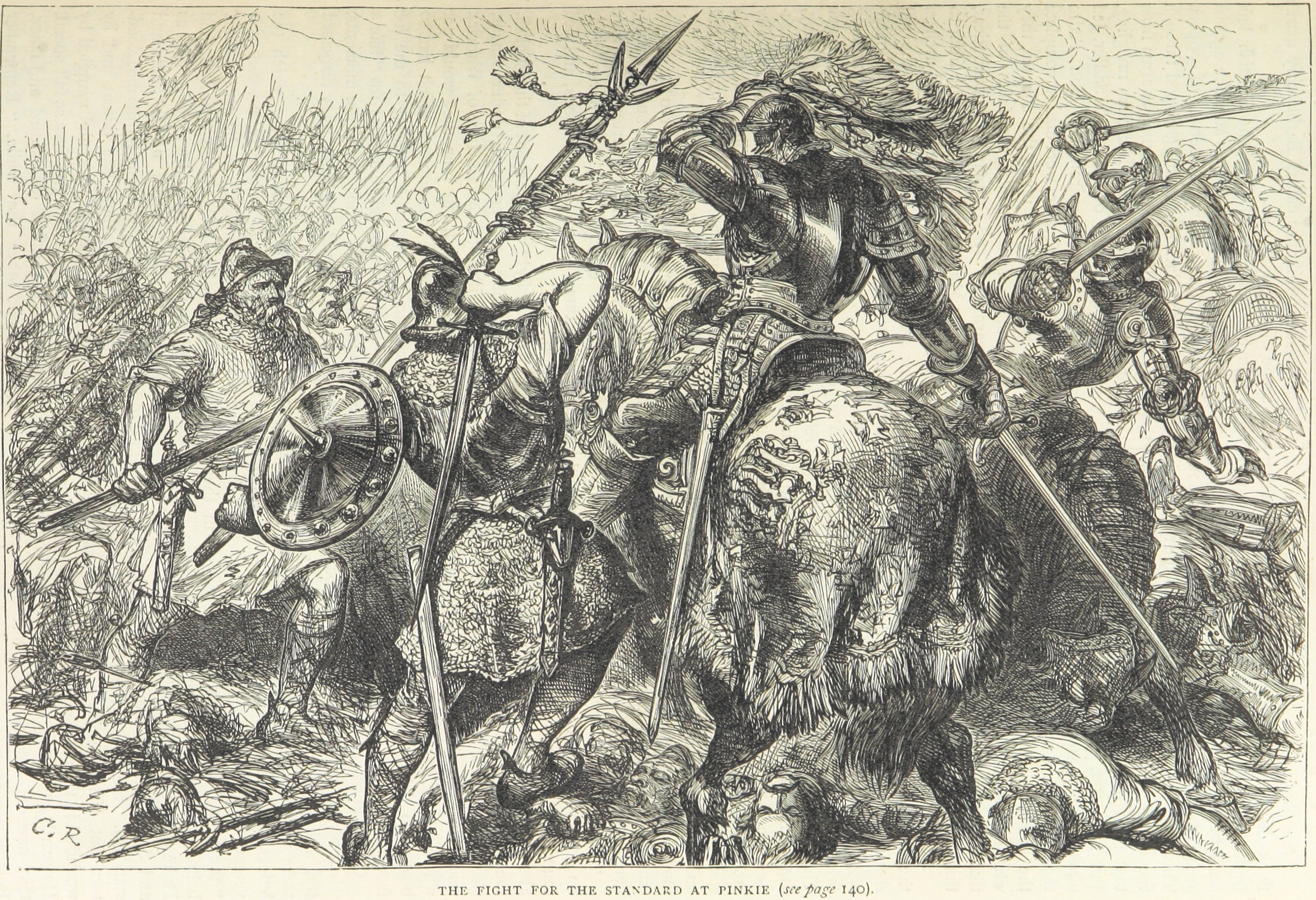
Additionally, John Drummond of Clan Drummond, the king's forester, was killed after hanging several MacGregors for poaching. The chief accepted responsibility for the killing, which was condemned by the Privy Council.
B. In the 17th century
After two MacGregor Clan members were executed in 1603, Alasdair MacGregor retaliated by leading over four hundred men into Colquhoun territory. The chief of Clan Colquhoun, commissioned to suppress the MacGregors, amassed a force of eight hundred foot soldiers and cavalry, marching to Glen Fruin. MacGregor’s tactical split, engaging the Colquhouns while a second group attacked from the rear led to the deaths of over two hundred Colquhouns and their retreat into the Moss of Auchingaich. This conflict later saw a gesture of reconciliation in the late 18th century when the clan chiefs met and shook hands at the conflict site.
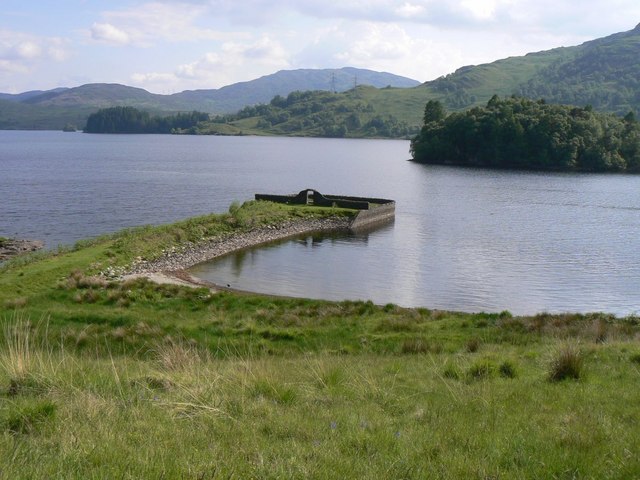
In April 1603, James VI of Scotland banned the MacGregor name, leading to the executions of Clan MacGregor leaders, including MacGregor, and eleven chieftains at Mercat Cross in Edinburgh by 1604. This marked a period of intense persecution for the clan, forcing many to adopt new names like Clan Murray or Clan Grant. They were relentlessly hunted with bloodhounds, driven from hiding in the heather, and scattered across the land.
Despite this, Clan Lamont of Cowal and Clan Chattan defied the persecution by offering aid and refuge to fleeing MacGregors. The Clan MacGregors remained loyal to the king during the Scottish Civil War, with two hundred men fighting alongside the Earl of Glencairn in Glencairn’s rising against the Commonwealth. Charles II later lifted the ban on MacGregor’s name, but William of Orange reinstated it after James VII’s deposition.
C. In the 18th century
Rob Roy MacGregor, born in 1671, was a son of MacGregor of Glengyle but adopted his mother’s surname, Campbell, due to circumstances. Sir Walter Scott immortalized his daring life in the novel “Rob Roy”. Known for his audacious exploits, Rob Roy remained a thorn in the government’s side until he died in 1734. He actively supported the Jacobite cause during the Jacobite rising of 1715, conducting bold raids such as the one on Dumbarton, causing panic in the town. Rob Roy also led Clan MacGregor in the Battle of Glen Shiel in 1719. He is buried in Balquhidder churchyard.

During the Jacobite rising of 1745, Clan MacGregor members fought at Prestonpans alongside the Jacobite army under the Duke of Perth. While some MacGregors were present at the Battle of Littleferry in 1746, they missed the Battle of Culloden due to their late arrival. Returning home after the uprising, Clan MacGregors boldly traveled through Atholl without interference, passing by Finlairg Castle, where the Clan Campbell militia openly defied Lord Campbell’s outposts. The persecution against the Clan MacGregor lasted until 1774, when the laws against them were repealed, ending their prolonged hardships.
D. In the 19th century
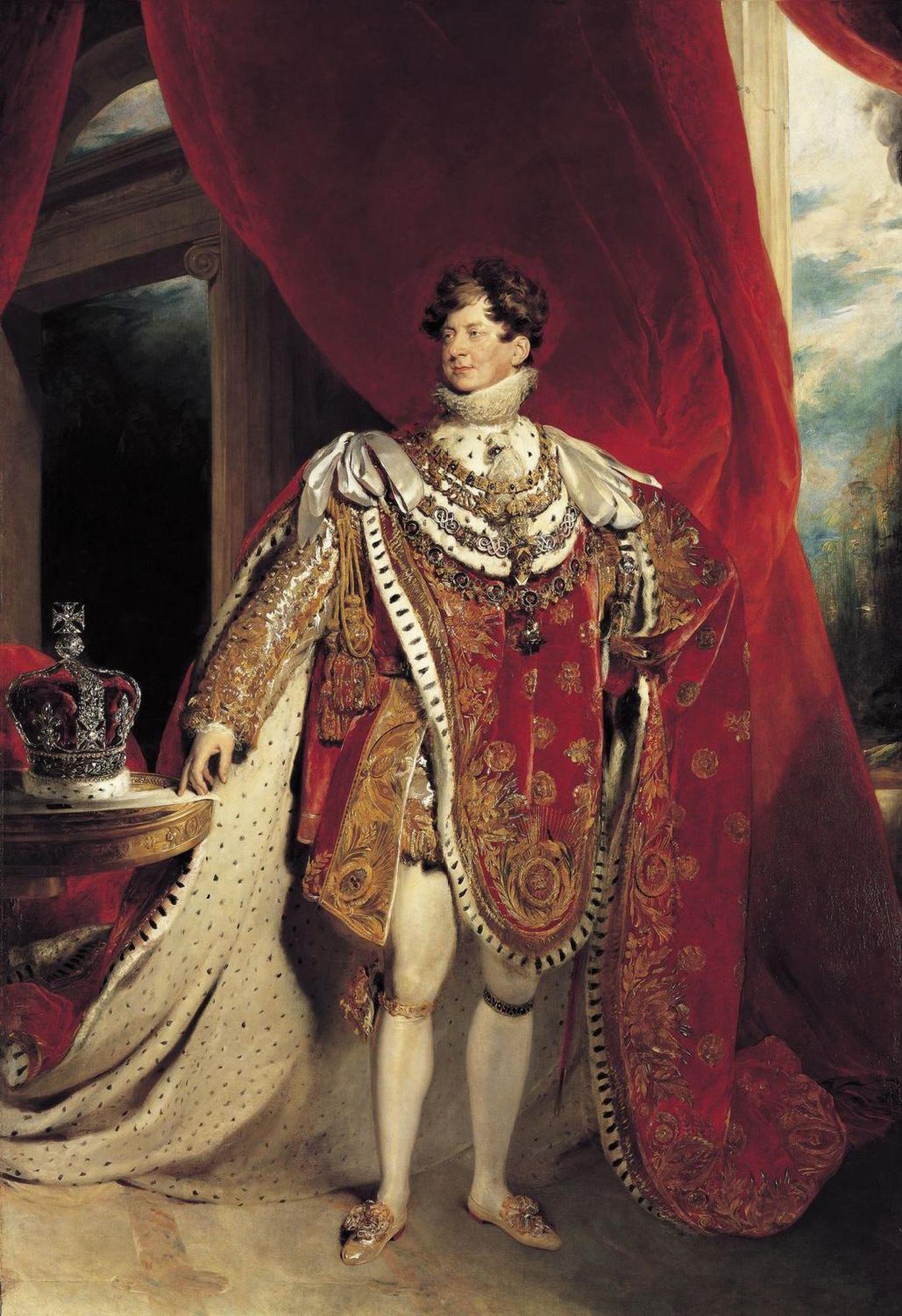
To revive the clan’s pride, the chiefs sought reinstatement. A petition was signed by 826 MacGregors, affirming General John Murray of Lanrick as the rightful chief. General Murray was a MacGregor tracing his lineage back to Duncan MacGregor of Ardchoille, who passed away in 1552. His son, Sir Evan, played a significant role during George IV’s visit to Scotland in 1822. During this historic event, Sir Evan and his fellow clansmen were entrusted with safeguarding the Honours of Scotland, also known as the Scottish Regalia, representing the oldest crown jewels in the British Isles.
III. Clan MacGregor Crest and Coat of Arms
A. Clan MacGregor Crest
The combination of these symbols in the MacGregor Clan Crest not only honors the clan’s historical roots but also conveys enduring values such as readiness, resilience, and a connection to the fertile landscapes of their ancestral lands. The crest is a proud emblem, representing the identity and spirit of Clan MacGregor’s history across generations.
Clan MacGregor/ Clan Gregor
Gaelic Name: MacGrioghair
Crest: A lion’s head erased Proper, crowned with an antique crown, Or
Motto: ’S Rioghal Mo Dhream (My race is royal)
Origin of Name: Son of Gregory (Flocksman)
Badge: Pine
Lands: Argyll and Perthshire
Historic Seat: Bannatyne, Newtyle, Angus
Clan Chief: Sir Malcolm MacGregor of MacGregor Bt
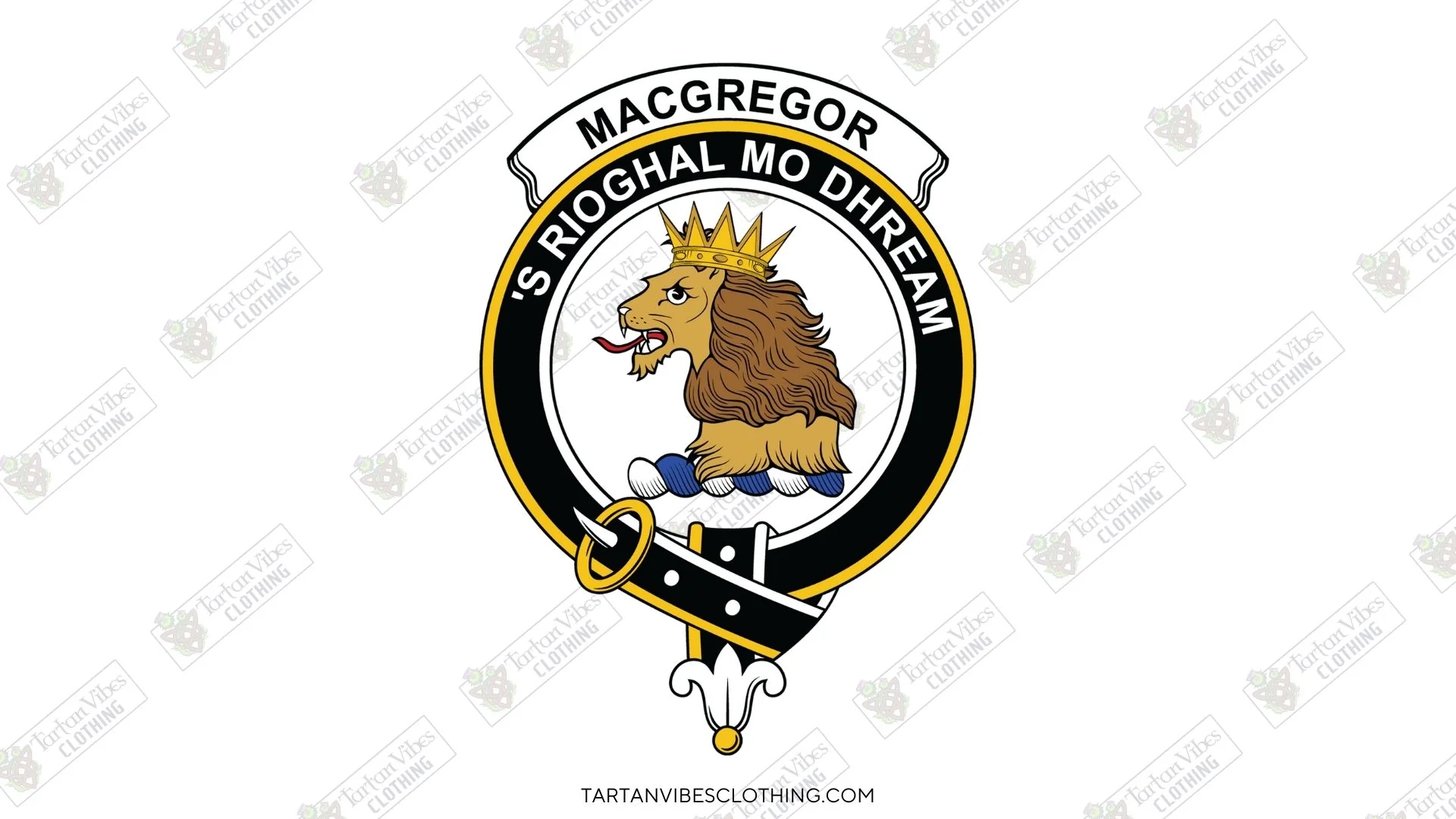
The Clan MacGregor crest features an erased lion’s head, depicted in natural colors, and adorned with an antique crown. This symbolizes strength, courage, and nobility, reflecting the proud heritage of the clan. The motto S’ Rioghal Mo Dhream, meaning “Royal is my race,” further emphasizes the clan’s esteemed lineage and noble ancestry. Together, these elements encapsulate the spirit and identity of Clan MacGregor, instilling a sense of honor and pride among its members.
B. Clan MacGregor Coat of Arms
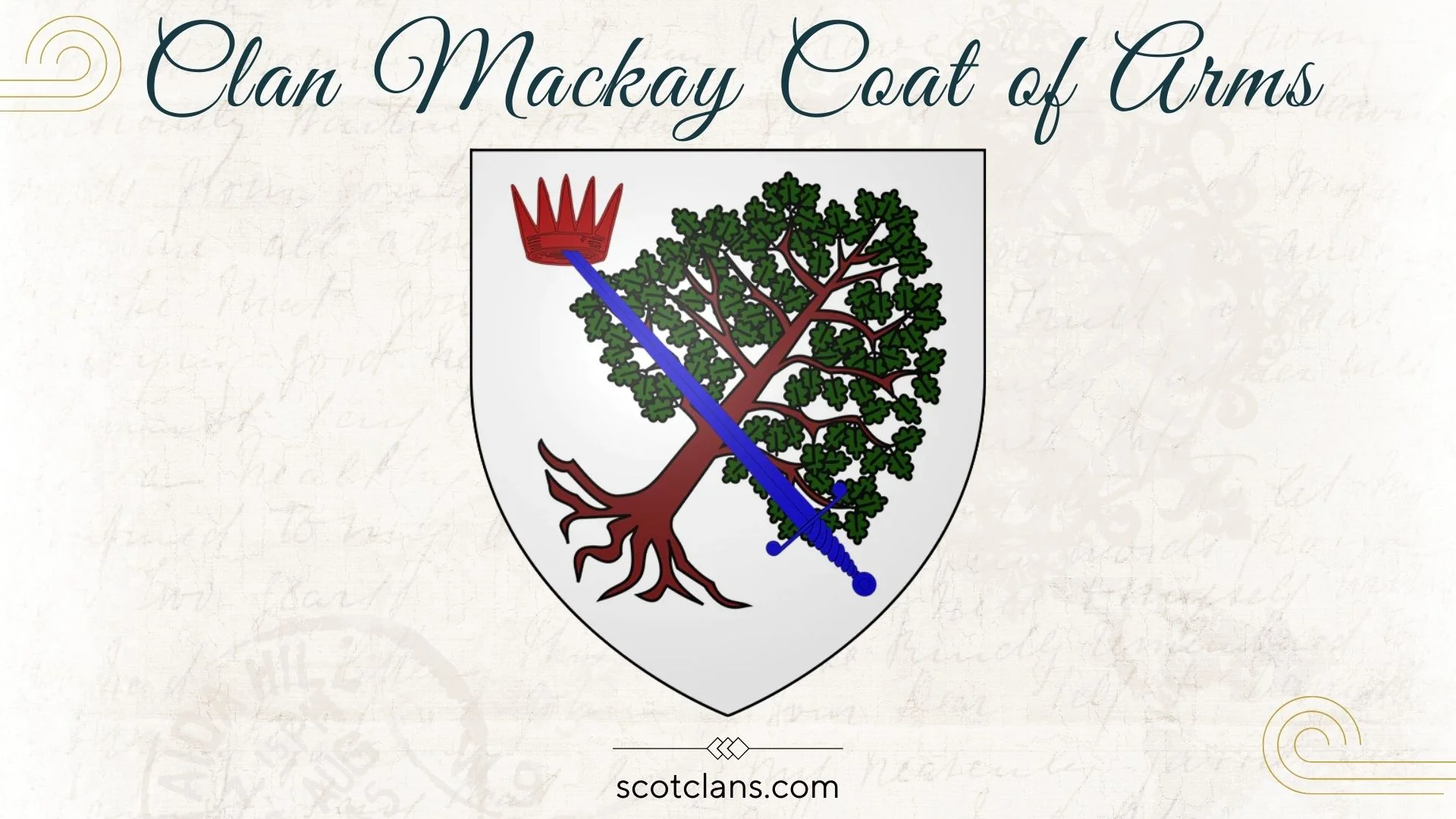
The Clan MacGregor Coat of Arms features a shield in Argent, displaying an oak tree eradicated in a bend sinister in its natural color. The oak tree, symbolizing strength and endurance, is surmounted by a sword with a pommel positioned in a bend. At the point of the sword, an antique crown is depicted in Gules, representing nobility and leadership. This combination of symbols embodies the proud heritage and warrior ethos of Clan MacGregor, highlighting traits such as valor, resilience, and royal lineage.
Overall, the MacGregor Clan Coat of Arms encapsulates the enduring legacy of the Clan MacGregor, depicting their proud heritage and unwavering dedication to their values and principles.
IV. Clan MacGregor Tartan
Every clan has multiple variations of its tartan, which can be quite bewildering for those unfamiliar with the system.
A. Clan MacGregor Red & Black Tartan
The “Rob Roy” tartan, mistakenly linked to the Clan MacGregor Scotland due to Highland romanticism, has sparked debates over the clan’s true claim to it. Although paintings from the mid-18th century depict notable figures like Norman Macleod and the 7th Earl of Wemyss in this tartan, suggesting broader usage, its origins date back to the late 17th century. Initially, a generic design before clan-specific tartans emerged in the late 18th century, Sir John Murray MacGregor formally recognized it as the Clan MacGregor tartan in 1816.
Despite its historical significance, this predominantly red and black tartan has been erroneously associated with “Rob Roy,” possibly coinciding with Sir Walter Scott’s novel released in 1817. While worn by the chief’s family, it’s not exclusively theirs, and any MacGregor can proudly don the Red and Black tartan.
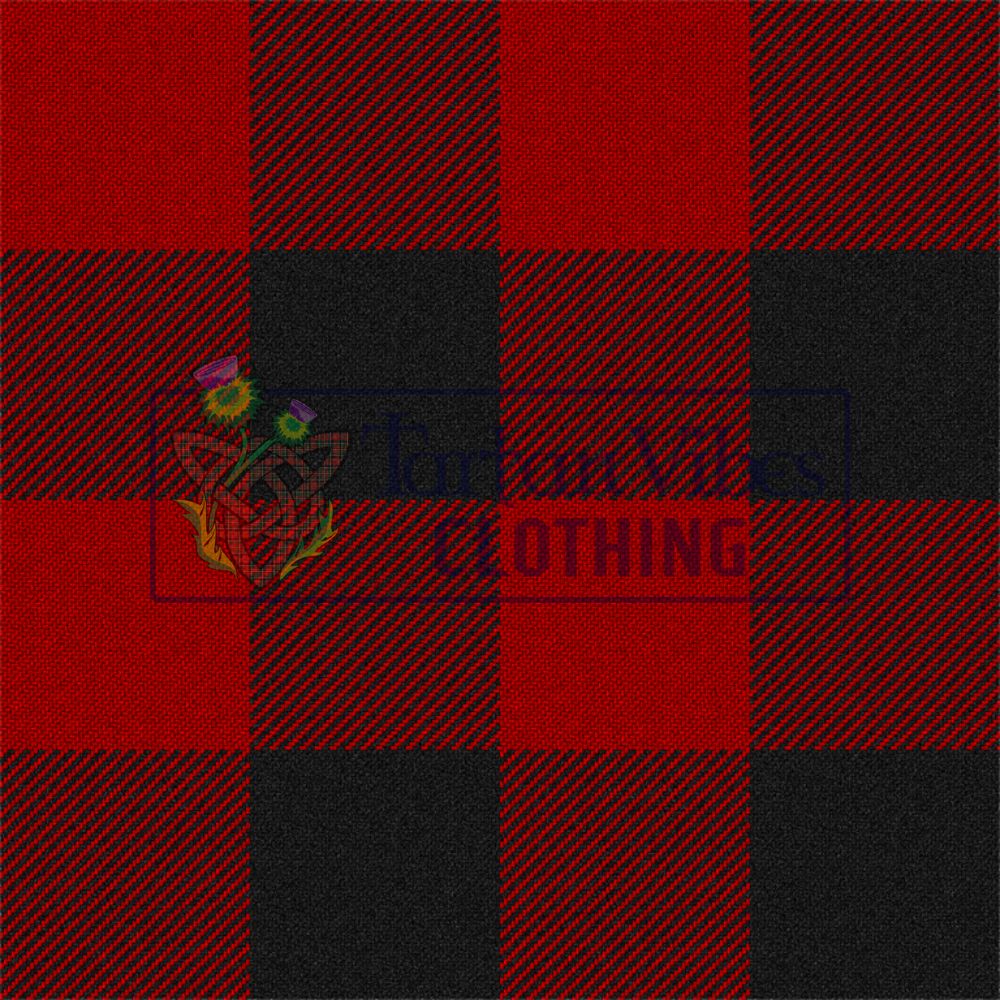
B. Clan MacGregor Red & Green Tartan
The tartan was officially registered with the Highland Society of London around 1810 for dress or court attire use. Its Red and Green variant gained popularity during King George IV’s visit to Edinburgh in 1822 when tartan was fashionable and closely linked to clan identities.
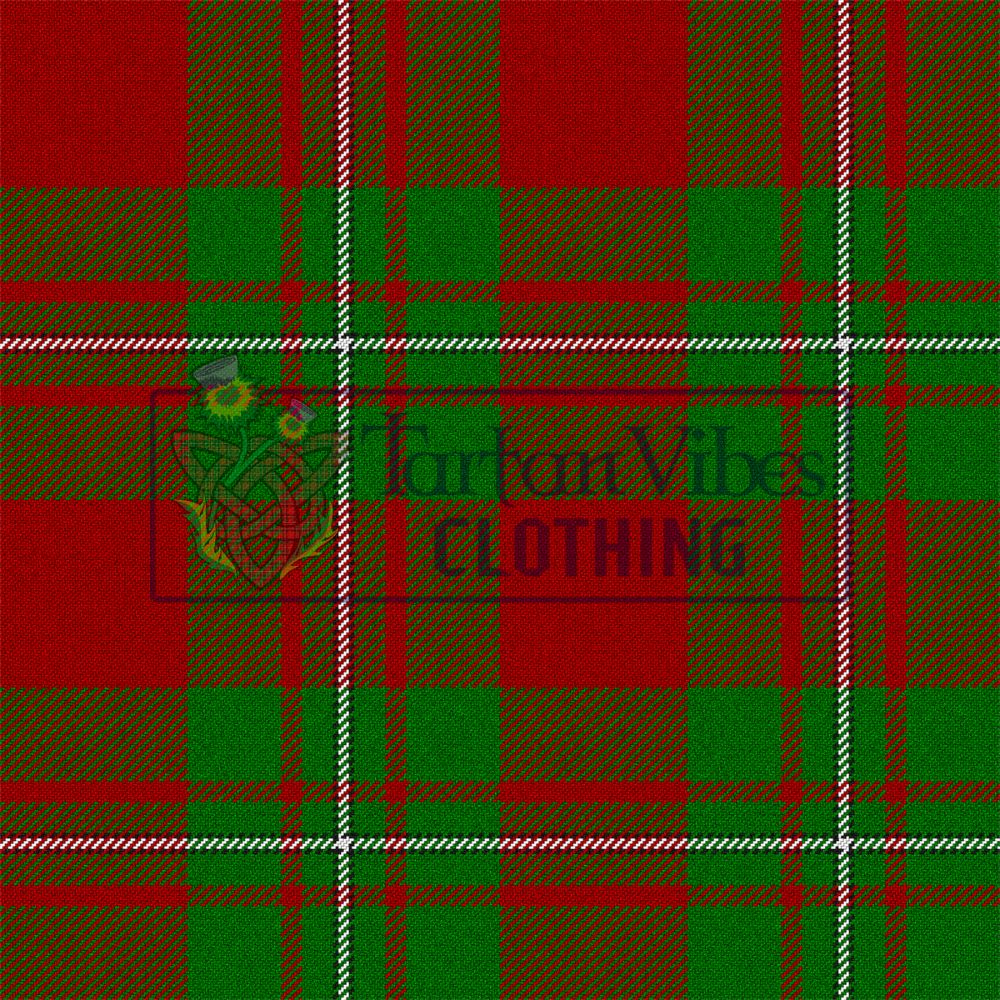
C. Clan MacGregor of Glengyle Tartan
This captivating tartan features a unique check design in red and dark blue, with double stripes centered on squares of the opposite color. Kinloch Anderson in Edinburgh holds a 1750 sample, and the current clan chief has a swatch from Nairn linked to Glengyle.
Despite the post-1745 ban on tartan and Highland dress (except for the military), highlanders secretly wove clan-associated tartans. Glengyle, a key MacGregor Glen and Rob Roy’s birthplace, holds historical significance, hinting at a specific Glengyle tartan. MacGregors from the Glengyle branch can proudly wear this tartan.
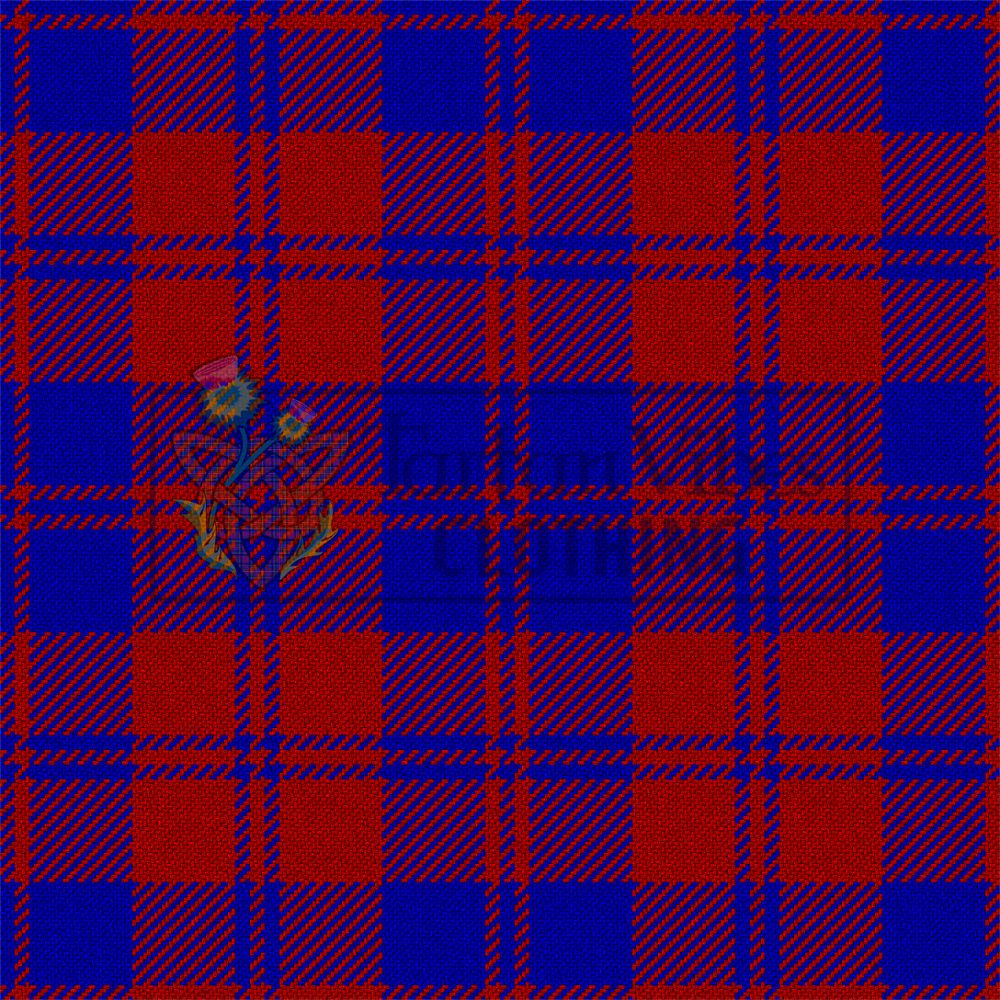
D. Clan MacGregor of Cardney Tartan
This tartan, crafted around 1930, is credited to Alasdair MacGregor of Cardney, the younger brother of the 22nd chief. He sought to create a family tartan using vegetable dyes and wool from his sheep, resulting in a variation of the Red and Green tartan with a burgundy hue. Originally intended for MacGregors of Cardney, it has been mistakenly marketed for years as ‘MacGregor Hunting.’ Despite this, Clan MacGregors who have purchased it are encouraged to wear it proudly.
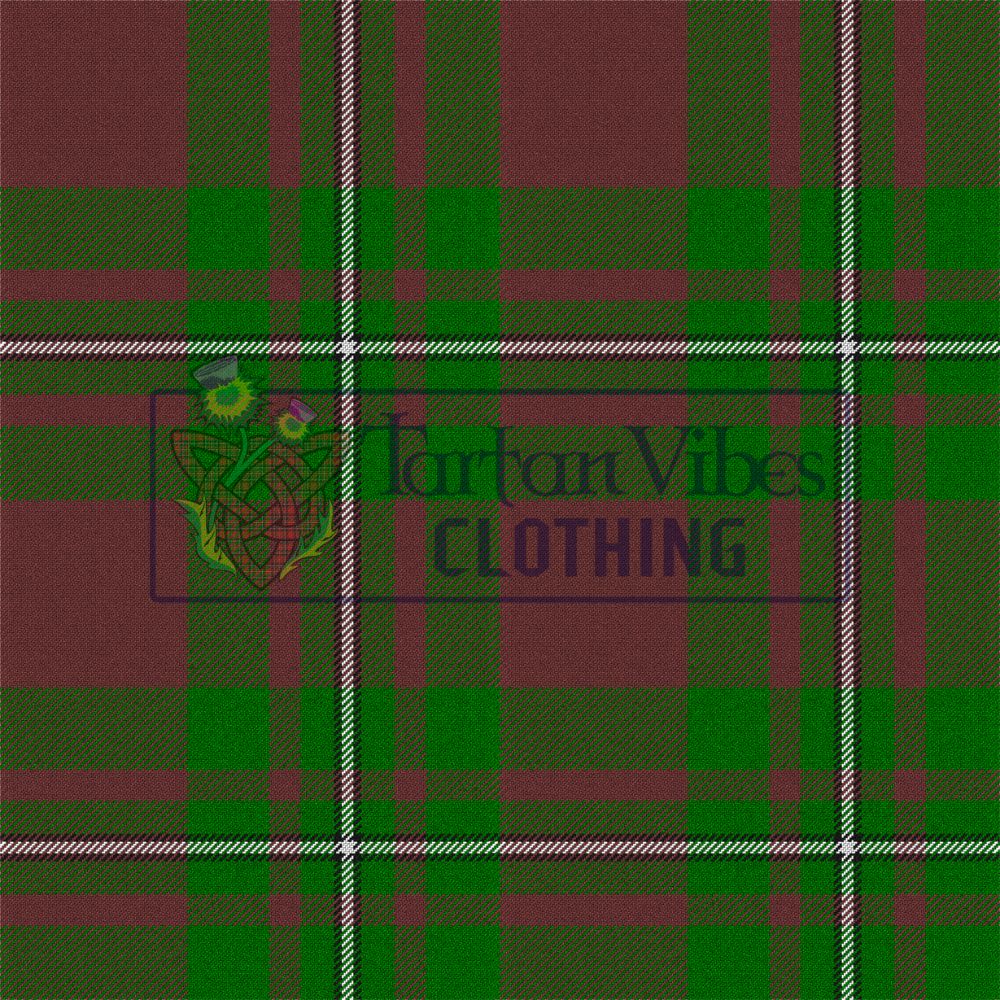
Explore the timeless traditions of Clan Mackay through our collection of tartan products on our website. And bring a piece of the clan's history into your present.
V. Prominent Members of Clan MacGregor
Prominent Members of Clan MacGregor encompasses many figures who have left indelible marks on Scottish history and culture. Among them, Rob Roy MacGregor stands out as a legendary folk hero who was celebrated for his defiance against oppression during the 17th and 18th centuries. Another notable figure is Sir Malcolm MacGregor of MacGregor, the 24th chief of Clan MacGregor, who is pivotal in guiding the clan’s traditions and legacy into the modern era.

Additionally, Alasdair MacGregor of Cardney, known for his contributions to the design of the Clan MacGregor tartan, holds significance within the clan’s history. Furthermore, Sir John Murray MacGregor’s leadership and dedication played integral roles in maintaining the honor and heritage of Clan MacGregor during the 19th century. Collectively, these prominent members exemplify the resilience, pride, and enduring spirit of Clan MacGregor.
📜 Please also see more clan chiefs at clangregor.com
VI. Conclusion
In conclusion, the legacy of Clan MacGregor stands as a testament to resilience, heritage, and enduring pride. MacGregor Clan in Scotland has demonstrated unwavering loyalty to its traditions and values through centuries of challenges and adversities. Through the centuries, prominent members such as Rob Roy MacGregor, Sir Malcolm MacGregor of MacGregor, Alasdair MacGregor of Cardney, and Sir John Murray MacGregor have upheld the clan’s traditions, values, and cultural identity.
Their contributions and leadership have ensured that Clan MacGregor remains a symbol of pride and unity, embodying the determination and loyalty that defines Scotland’s historic clans. As custodians of a remarkable legacy, Clan MacGregor continues to inspire generations with its storied past and enduring heritage.
Frequently Asked Questions
Who is the current chief of the MacGregor clan?
Sir Malcolm MacGregor of MacGregor is the 24th chief of Clan Gregor and Chieftain of the Children of the Mist, called the most romantic title in Scotland.
Why was MacGregor banned?
Following their involvement in various feuds and conflicts, including clashes with rival clans and political upheavals, the surname MacGregor was officially proscribed in 1603. This ban aimed to suppress the clan’s power and influence, leading to severe repercussions for those who bore the name.
What is the Clan MacGregor motto?
The MacGregor clan motto is “S’Rioghal Mo Dhream” (Royal is my race).
What is the MacGregor clan symbol?
MacGregor Clan Crest: A crowned lion’s head.
Did the MacGregor clan have a castle?
The official clan seat of the MacGregors for over a hundred years, Lanrick Castle was also known as Clan Macgregor Castle located near Doune, Perthshire.

